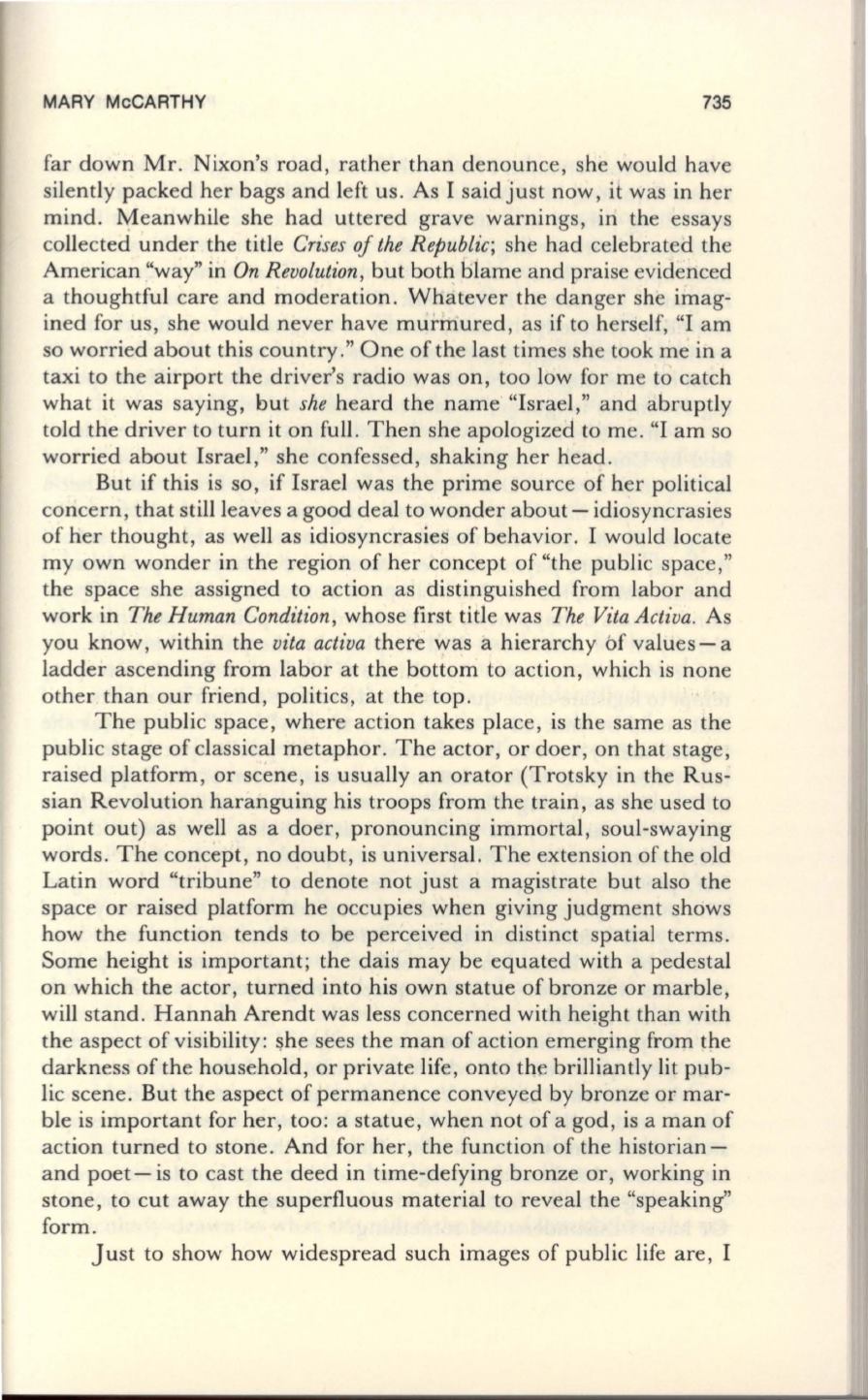
MARY McCARTHY
735
far down Mr. Nixon's road, rather than denounce, she would have
silently packed her bags and left us. As I said just now, it was in her
mind. ¥eanwhile she had uttered grave warnings, in the essays
collected under the title
Crises of the Republic;
she had celebrated the
American "way" in
On Revolution,
but both blame and praise evidenced
a thoughtful care and moderation. Whatever the danger she imag–
ined for us, she would never have murmured, as if to herself, "I am
so worried about this country ." One of the last times she took me in a
taxi to the airport the driver's radio was on, too low for me to catch
what it was saying, but
she
heard the name "Israel," and abruptly
told the driver to turn it on full. Then she apologized to me . "I am so
worried about Israel," she confessed, shaking her head .
But if this is so , if Israel was the prime source of her political
concern, that still leaves a good deal to wonder about- idiosyncrasies
of her thought, as well as idiosyncrasies of behavior. I would locate
my own wonder in the region of her concept of "the public space,"
the space she assigned to action as distinguished from labor and
work in
The Human Condition,
whose first title was
The Vita Activa.
As
you know, within the
vita activa
there was a hierarchy
bf
values- a
ladder ascending from labor at the bottom to action , which is none
other than our friend, politics, at the top.
The public space , where action takes place, is the same as the
public stage of classical metaphor. The actor , or doer, on that stage,
raised platform, or scene, is usually an orator (Trotsky in the Rus–
sian Revolution haranguing his troops from the train, as she used to
point out) as well as a doer, pronouncing immortal, soul-swaying
words. The concept, no doubt, is universal. The extension of the old
Latin word "tribune" to denote not just a magistrate but also the
space or raised platform he occupies when giving judgment shows
how the function tends to be perceived in distinct spatial terms .
Some height is important; the dais may be equated with a pedestal
on which the actor, turned into his own statue of bronze or marble,
will stand . Hannah Arendt was less concerned with height than with
the aspect of visibility: $he sees the man of action emerging from the
darkness of the household, or private life, onto the brilliantly lit pub–
lic scene. But the aspect of permanence conveyed by bronze or mar–
ble is important for her, too: a statue, when not of a god, is a man of
action turned to stone . And for her, the function of the historian–
and poet- is to cast the deed in time-defying bronze or, working in
stone, to cut away the superfluous material to reveal the "speaking''
form.
Just to show how widespread such images of public life are, I


